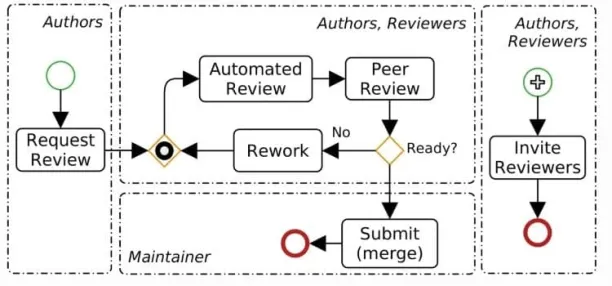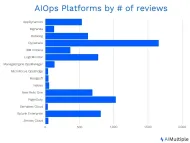Code Review in 2024: Best Practices & Latest Advances
Code reviewed by a second developer tends to be more effective, secure and lead to less technical debt. No matter how successful and experienced code developers, a code review can improve code quality by identifying otherwise hard-to-notice suboptimal code.
What is a code review?
Code review is a part of quality assurance (QA). It is a systematic review of a program’s source code to assure its technical content and quality. Common vulnerabilities such as race conditions, memory leaks and buffer overflows can be found by the code review process which leads reviewers to improve software quality.
There are various forms of code review such as
- pair programming: two programmers work together in one workstation
- formal inspections: A traditional method that needs two programmers to meet and review the code line by line
- informal walkthroughs: is a review process that a programmer leads and the other team members ask questions about the possible errors against development standards.
- Email pass-around: the author emails the code to reviewers.
How does code review work?
One or more developers are involved in the source code review process. They provide both positive and negative feedback to the code authors. For a more independent code review, the reviewers should not be involved in the project. This ensures that the code is fully understandable and maintainable.
A guide or checklist would be helpful to ensure that the code satisfies the coding standards and that common mistakes are identified. The project will need a rework if the reviewers are not satisfied with code quality. This process is repeated until the project gets a green light from the reviewers.

A typical output of a code review would include:
- General Overview
- Code Metrics
- Architecture review
- UI review
- Tests review
- Code Quality review
- Recommendations
Why is code review important now?
Software is eating the world and any software is open to mistakes such as security bugs, architectural errors and many more.
In almost all aspects of life, from manufacturing to software development, it is better to identify and correct mistakes earlier than later. Code reviews enable this and enable faster and cheaper completion of software development projects.
What are the benefits of code review?
The main purpose of the code review is to increase security, reliability, efficiency and robustness of the code. Code reviews can improve:
- Software quality:
- Early bug detection: Earlier bug detection leads to less customer dissatisfaction and reduced debugging effort.
- Compliance to coding standards : Code review helps comply with standards that are applied throughout the company or that the company must comply with.
- Software security: It is important to protect software against malicious attack and other hacker risks. Some bugs can lead to important security issues. For example, code reviews help identify vulnerabilities such as format string exploits, race conditions, memory leaks and buffer overflows.
- Collaboration and knowledge transfer: During the code review, team members or managers can have a better understanding of the code base. Code review process helps improve team coordination.
What are the latest advances in code review?
There are two main types of code review, peer code review (also called manual code review) and automated code review. Automated code reviews remove the possibility of human error and speed up the review process.
- Manual Code Review: The source code is read by a team, line by line, to check for possible defects. This process requires the time of a group of individuals with significant experience and skills. Such a review is necessary especially for reviewing high level aspects of the code such as architectural decisions.
- Automated Code Review: Automated tools attempt to find errors and defects to identify code improvement suggestions. These tools can also support developers as they program. During development, automated software tools can be configured to display a list of alerts to high code that violates programming standards or includes possible bugs and defects.
Code Review Best Practices
Though teams should formulate their code review best practices and process, there are some common best practices as well:
- Use checklists
- Review the code objectively
- Set goals and capture metrics
- Give short and precise comments
- Review carefully and don’t review more than 60 minutes at a time
- Foster a positive code review culture
- Establish a process for fixing the identified defects
If you want to benefit from code review tools but do not know where to start, feel free to go over our data-driven lists of code review tools.
Anything else you wonder about code reviews? Please leave a comment.

Cem has been the principal analyst at AIMultiple since 2017. AIMultiple informs hundreds of thousands of businesses (as per similarWeb) including 60% of Fortune 500 every month.
Cem's work has been cited by leading global publications including Business Insider, Forbes, Washington Post, global firms like Deloitte, HPE, NGOs like World Economic Forum and supranational organizations like European Commission. You can see more reputable companies and media that referenced AIMultiple.
Throughout his career, Cem served as a tech consultant, tech buyer and tech entrepreneur. He advised businesses on their enterprise software, automation, cloud, AI / ML and other technology related decisions at McKinsey & Company and Altman Solon for more than a decade. He also published a McKinsey report on digitalization.
He led technology strategy and procurement of a telco while reporting to the CEO. He has also led commercial growth of deep tech company Hypatos that reached a 7 digit annual recurring revenue and a 9 digit valuation from 0 within 2 years. Cem's work in Hypatos was covered by leading technology publications like TechCrunch and Business Insider.
Cem regularly speaks at international technology conferences. He graduated from Bogazici University as a computer engineer and holds an MBA from Columbia Business School.
To stay up-to-date on B2B tech & accelerate your enterprise:
Follow on

Comments
Your email address will not be published. All fields are required.